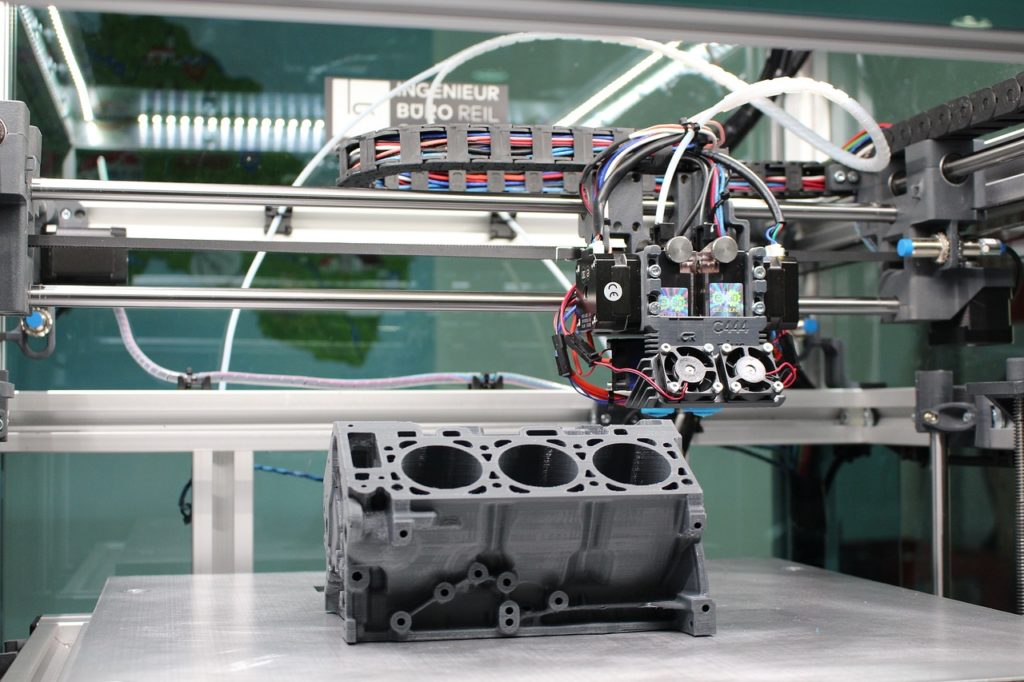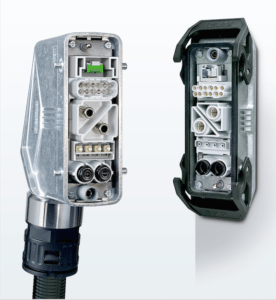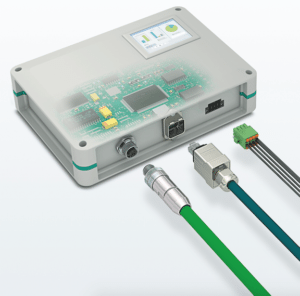How to Specify Signal Connections for Industrial Applications
Aspects including: cost, environment, vibration, connector density, signal integrity, installation methods, and safety requirements should be key factors when specifying signal connections for industrial applications
Loreen Katz, Product Marketing Manager – Industrial Field Connectivity, Phoenix Contact USA
Where are signals found in industrial and semi-industrial settings? Everywhere. Devices such as sensors, actuators, switches, valves, and cameras need signal connections to execute control and monitoring processes. As smart devices continue to be added to plant floor operations in ever-increasing numbers, secure, reliable connections will become even more critically important. Today’s devices must handle a wide variety of functions and include features that ensure cost efficiency, reliability, and safe operation.

When selecting the appropriate connection technology for signal lines, design engineers and device manufacturers have many factors to consider. Aspects including: cost, environment, vibration, connector density, signal integrity, installation methods, and safety requirements should be key factors in the specification of appropriate signal connections.
Cost, while an important factor, is often not evaluated regarding applied cost versus simple component cost, and it should be. Engineers and buyers consistently desire cost-effective connectors that perform well and meet application requirements. However, it’s also important to consider the entire process, spanning procurement and manufacturing through to onsite installation and maintenance. The cost of the labor and equipment downtime required for lengthy installations and troubleshooting processes — for instance, identifying and resolving signal loss — can add up quickly, and can be significant compared to component price. When selecting connection technology designed for efficiency, the benefits of time saving installation processes and long-term operational uptime achieve the lowest applied cost.
The overall trend in device manufacturing to reduce size and increase pin count has inspired connector manufacturers to offer high-density products. Signal terminations often need to be made in space-constrained applications, so connector density and the combination of signal wiring with power or data lines have become increasingly important. Choosing connectors that combine functionality with a modular design can provide a serious space-saving advantage.
 Figure 1: HEAVYCON modular connectors from Phoenix Contact offer multiple functions within a single housing to save space.
Figure 1: HEAVYCON modular connectors from Phoenix Contact offer multiple functions within a single housing to save space.
The environment surrounding signal connections often affects the reliability of the signal. Elements including: dirt, moisture, oils, chemicals, high and low temperatures, and UV and ozone exposure all play a significant role in the selection of the materials and sealing capability of signal connections. Additionally, electromechanical interference (EMI) emitted by nearby drives, motors, and other noise-producing equipment can cause signal loss or unreliable signal transmission if the connection is not properly shielded. Using connectors and cabling that offer shielding of the signal from end-to-end will eliminate EMI concerns and support signal integrity.
Many connections in industrial applications are also exposed to mechanical shock and vibration, and the stress of such forces on the connector contacts, wire terminations, or PCB solder joints can cause intermittent to complete signal loss. When selecting connections for high-vibration applications, review the connector design for vibration-resistant construction elements such as: locking screw threads or mechanical latches, radial O-rings, mounting flanges, set screws, and spring technology.
Every application requires a reliable connection, and signal integrity can be compromised by any break point along the line. Aside from the wire termination to the contact, the quality of the contact material is the factor that most significantly affects performance. When evaluating contact designs, the use of gold plating should be specified. Gold is a noble metal with good electrical properties and is not subject to corrosion issues. The prevention of fretting corrosion and the presence of high mating contact forces are two key reasons to use gold plating in industrial applications.
Fast connections are also necessary for device installation, especially when a job requires numerous connections. The shortest installation time supports a lower total cost for the complete job. Connections are often located in hard-to-reach areas or in poor lighting, which makes them difficult to see, and finger fatigue and cross threading can plague the success of fast installations as well. Some of these issues can be prevented on the drawing board by designing devices with fast connection technology for PCB terminal blocks, such as spring cage or insulation displacement contacts (IDCs). In the field, these devices provide installers with options for quick plug connections with half-turn technology or push-pull connections. When a device connection requires field wiring, using field-installable connectors with push-in, IDC, or spring contacts will offer the most savings, as these technologies enable more connections in shorter spans of time. Studies have proven that some IDC connectors can save 60% of the installation time required for traditional screw terminations and that spring-contact connectors can save 80%.
 Figure 2: Plug-and-play connections save time during device installation.
Figure 2: Plug-and-play connections save time during device installation.
Eliminating the potential for connection errors is a major concern for end users and field technicians, but device manufacturers and engineers can prevent potentially mismated connections in the design stage. When using multiple connectors with the same footprint in a single device, connector keying can eliminate confusion and effectively prevent users from plugging the wrong connector into the wrong socket. In a typical signal connectivity scheme, for example, engineers can select circular connectors with keying variations including: A, B, C, D, S, T, X, or Y. Terminal block connectors can also be keyed in several different patterns to ensure that only the correct plug can be mated with the appropriate socket.
Labeling and color-coding can also reduce mismating potential. The most common errors that technicians make in the field are miswired connections, and improper wire termination and incorrect terminal assignments can delay system commissioning and device start-up. Using color-coded terminal blocks or other indicative markers on all wire connection points can eliminate confusion and reduce the amount of time spent on — or even the need for — troubleshooting errors in the field.
When selecting signal connections for industrial environments, it’s essential to evaluate the many variables that affect performance, including: cost, environment, vibration, connector density, signal integrity, installation methods, and safety requirements. High-quality industrial connectors will help ensure that the end device meets international standards and provides safe, long-lasting functionality.





